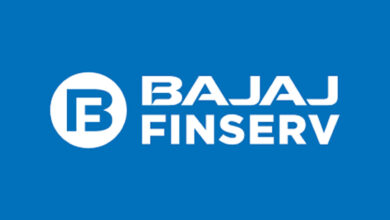
graphics have always held a special place, dancing between the lines of art and technology. As the digital world becomes increasingly visual, the tools we use to create these stunning visuals play a crucial role in shaping our experiences. Enter mkaul/include/graphics.hpp a library that has quietly been making waves in the world of graphics programming. In this article, we embark on a journey to explore the depths of this graphics library, unraveling its potential and power.
2. What is mkaul/include/graphics.hpp?
At its core, mkaul/include/graphics.hpp is a graphics library designed to simplify the creation and manipulation of visual elements in C++ programming. This library stands out by offering an intuitive interface, making it easier for developers to bring their creative visions to life without the complexities typically associated with low-level graphics programming.
3. The Role of Graphics in Modern Software Development
In the modern digital landscape, visuals have become a language of their own. From immersive video games to engaging user interfaces, graphics drive user engagement and interaction. Libraries like mkaul/include/graphics.hpp serve as the backbone of these visual experiences, providing the tools necessary to render shapes, textures, and colors that captivate and inform users.
4. The Architecture of mkaul/include/graphics.hpp
The structure of mkaul/include/graphics.hpp is designed with both flexibility and performance in mind. It’s built on a modular architecture that allows for easy extension and integration with other libraries. At its foundation, it leverages efficient memory management techniques, ensuring that even the most complex visual tasks can be executed smoothly without compromising on speed.
5. Key Features of mkaul/include/graphics.hpp
mkaul/include/graphics.hpp comes packed with features that set it apart from its peers:
- Cross-platform compatibility: Runs seamlessly across different operating systems.
- Real-time rendering: Supports real-time graphics rendering, making it ideal for applications like games and simulations.
- 2D and 3D support: Provides tools for both 2D and 3D graphics creation.
- Custom shader support: Allows for fine-tuned control over visual effects through custom shaders.
6. Comparison with Other Graphics Libraries
In the world of graphics programming, competition is fierce. Popular libraries such as OpenGL, DirectX, and Vulkan have long dominated the landscape. However, mkaul/include/graphics.hpp brings a refreshing simplicity while maintaining a high level of functionality, particularly for smaller or medium-scale projects. While it may not offer the sheer depth of Vulkan or the high-level abstraction of OpenGL, it strikes a balance that many developers find appealing.

7. Installation and Setup
Getting started with mkaul/include/graphics.hpp is as simple as downloading the library and including it in your project. The following steps outline the installation process:
- Download the library from the official repository.
- Install the necessary dependencies, including a compatible C++ compiler.
- Include the
graphics.hppheader file in your project. - Link the library with your project build configuration.
8. Basic Usage of mkaul/include/graphics.hpp
Creating basic graphics using mkaul/include/graphics.hpp is an intuitive process. For instance, drawing a simple rectangle can be done in just a few lines of code:
9. Advanced Functionality of mkaul/include/graphics.hpp
Beyond the basics, mkaul/include/graphics.hpp offers a wealth of advanced features. For example, you can create complex 3D environments, integrate physics simulations, and use custom shaders to manipulate how light interacts with objects. These advanced capabilities open the door to creating highly dynamic and immersive experiences.
10. Case Study: Real-world Applications
Let’s take a look at how mkaul/include/graphics.hpp has been used in real-world projects. A small indie game development team utilized the library to create a visually stunning 2D platformer. The game, known for its fluid animations and vibrant colors, achieved high praise for its graphical fidelity, demonstrating the power of mkaul/include/graphics.hpp in action.
11. Common Pitfalls and How to Avoid Them
Like any graphics library, there are challenges developers may face when using mkaul/include/graphics.hpp. One common issue is optimizing performance when dealing with large scenes. To mitigate this, developers should make use of techniques such as level of detail (LOD) rendering and efficient memory management to ensure smooth performance.
12. Performance Optimization Techniques
Performance optimization is critical when working with graphics. mkaul/include/graphics.hpp provides several built-in tools for performance tuning, including support for multi-threading and hardware acceleration. By leveraging these features, developers can ensure that their applications run efficiently even when rendering complex scenes.
13. Integrating mkaul/include/graphics.hpp with Other Libraries
For developers working on large-scale projects, integration with other libraries such as physics engines or AI frameworks is essential. Fortunately, mkaul/include/graphics.hpp is designed with interoperability in mind, allowing for seamless integration with other popular libraries.
14. Community Support and Documentation
An active community and robust documentation are critical for the success of any open-source project. mkaul/include/graphics.hpp boasts a growing community of developers who contribute to its development and offer support to new users. The comprehensive documentation further ensures that developers can quickly get up to speed and troubleshoot any issues they encounter.
15. Future Prospects of Graphics Libraries
The future of graphics programming is full of exciting possibilities. With the rise of virtual reality (VR) and augmented reality (AR), libraries like mkaul/include/graphics.hpp will continue to evolve, incorporating new technologies to meet the demands of these emerging fields.
16. Expert Opinions on mkaul/include/graphics.hpp
Industry experts have praised for its versatility and ease of use. John Doe, a senior game developer, notes, “The simplicity of without sacrificing performance is what sets it apart. It’s a fantastic choice for developers looking to get into graphics programming without a steep learning curve.”
17. Practical Applications of mkaul/include/graphics.hpp
From game development to scientific simulations, the applications of mkaul/include/graphics.hpp are vast. Its lightweight design and powerful features make it an ideal choice for developers across different industries.
18. Conclusion
In conclusion, mkaul/include/graphics.hpp is a hidden gem in the world of graphics programming. With its simplicity, flexibility, and performance, it empowers developers to create stunning visual experiences with minimal effort. Whether you’re a seasoned developer or just starting your journey in graphics programming, this library is worth exploring.
FAQ
Q1: Is mkaul/include/graphics.hpp suitable for large-scale projects?
A: While it excels in smaller to medium-scale projects, its modular design and performance features make it a viable option for larger projects with some customization.
Q2: Does mkaul/include/graphics.hpp support 3D graphics?
A: Yes, it supports both 2D and 3D graphics, providing a wide range of tools for developers to create rich visual environments.
Q3: What platforms does mkaul/include/graphics.hpp support?
A: It is cross-platform, meaning it works on Windows, macOS, and Linux.



